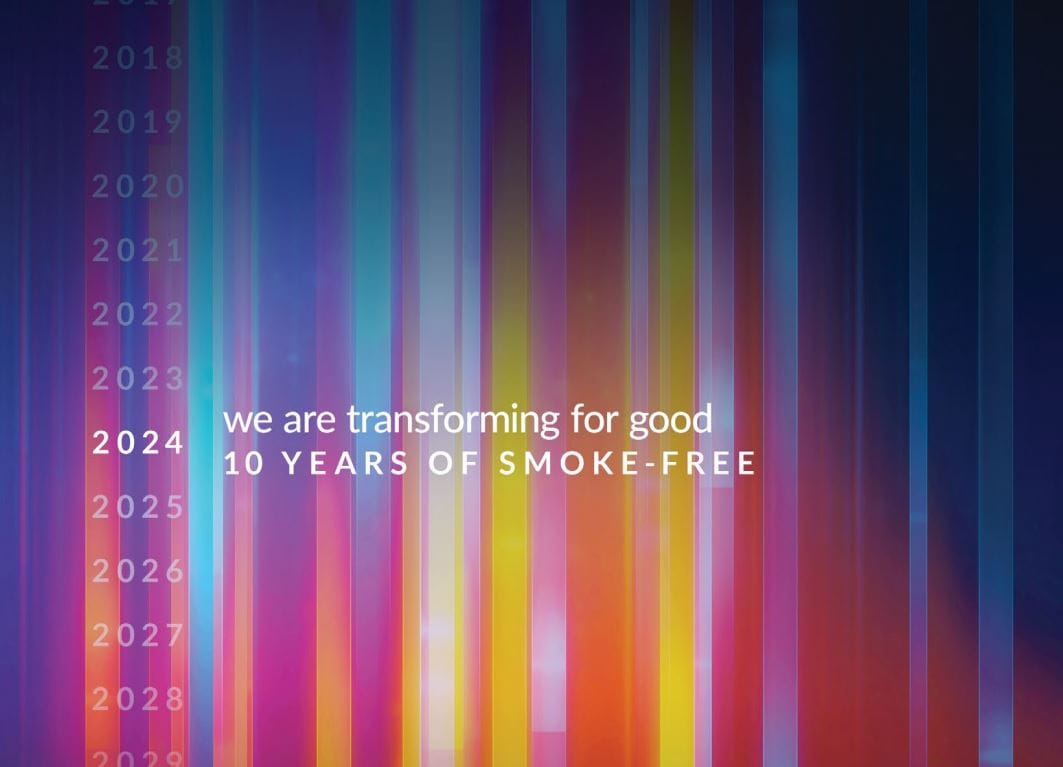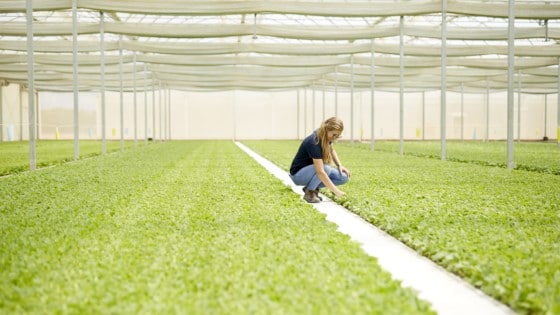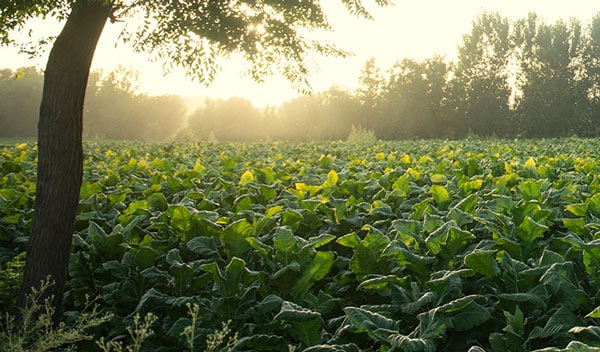Our performance at a glance
The metrics on this page are explained in the relevant sections of our Integrated Report 2024 and in additional communications available on our website. Please also refer to the Glossary on pages 200-203.
Unless otherwise indicated, the data contained herein cover our operations worldwide for the full calendar year 2024 or reflect the status as of December 31, 2024. Where not specified, data comes from PMI financials, nonfinancials, or estimates.
Unless explicitly stated, the data, information, and aspirations in this report do not incorporate PMI’s wellness and healthcare business, Aspeya.1 Regarding the Swedish Match acquisition, completed late 2022, unless otherwise indicated, this report includes information pertaining to its sustainability performance.
Footnotes: 1 In accordance with Danish law, Fertin Pharma, a subsidiary of Aspeya, has issued its ESG & Sustainability Report 2024, which content exclusively covers Fertin Pharma own operations and does not cover PMI or other PMI’s subsidiaries sustainability performance

Product impact performance tables
view data
Operational impact performance tables
view data
Fundamentals performance tables
view data
Forward-looking aspirations tables
view dataProduct impact
The 2024 metrics marked with an asterisk (*) are subject to PwC’s Limited Assurance Report.
Note: Unless otherwise stated, all applicable business transformation metrics include Swedish Match related data as of November 11, 2022 (acquisition date), as well as wellness and healthcare business.
1 Total PMI smoke-free users is defined as the sum of total IQOS users, total oral smokeless users, and total e-vapor users of PMI products minus poly-users across PMI's smoke-free product categories. 2022 and 2023 IQOS user data was restated.
For definitions, see Glossary.
2 Previously the metric was named "Estimated number of users who have switched to PMI smoke-free products and stopped
smoking (in millions)." The change pertains to name only. The methodology remains the same.
3 For definition of net revenues related to smoke-free, see Glossary.
Data excludes the impact related to termination of distribution arrangement in the Middle East in 2023.
4 For definition of available for sale, see Glossary.
5 Excluding PMI Global Travel Retail. World Bank report issued in 2021 is used on a comparative basis for income level classification. For definition of low- and middle-income markets, see Glossary.
6 Combustible tobacco products shipment volume includes cigarettes and other tobacco products expressed in cigarette equivalent units.
7 This indicator is calculated based on millions of units.
8 Direct
spend focuses on materials used in the manufacture of our products; it includes tobacco leaf, direct materials, and electronic devices and accessories. Data excludes Swedish Match and wellness and healthcare business.
9 Data reflect
the number of factories operated and owned by PMI at the end of the respective year. “Smoke-free products factories” is defined as manufacturing facilities producing heated tobacco units and oral nicotine products. The number of factories
reported is based on location, i.e., if a facility is one location, but has several physical areas (plants) the facility is counted as one.
The 2024 metrics marked with an asterisk (*) are subject to PwC’s Limited Assurance Report.
Notes: Unless otherwise stated, all applicable business transformation metrics include Swedish Match related data as of November 11, 2022 (acquisition date), as well as wellness and healthcare business.
1 Total PMI smoke-free users is defined as the sum of total IQOS users, total oral smokeless users, and total e-vapor users of PMI products minus poly-users across PMI's smoke-free product categories. 2022 and 2023 IQOS user data was restated.
For definitions, see Glossary.
2 Previously the metric was named "Estimated number of users who have switched to PMI smoke-free products and stopped
smoking (in millions)." The change pertains to name only. The methodology remains the same.
3 For definition of available for sale, see Glossary.
4 Excluding PMI Global Travel Retail. World Bank report issued in 2021 is used on a comparative basis for income level classification. For definition of low- and middle-income markets, see Glossary.
5 Investments reflect research, product and commercial development, production capacity, scientific substantiation, and studies on adult smoker understanding. Figures do not include Swedish Match and wellness and healthcare business.
6 Data reflect the number of factories operated and owned by PMI at the end of the respective year. “Smoke-free products factories” is defined as manufacturing facilities producing heated tobacco units and oral nicotine
products. The number of factories reported is based on location, i.e., if a facility is in one location, but has several physical areas (plants), the facility is counted as one.
7 Direct spend focuses on materials used in the
manufacture of our products; it includes tobacco leaf, direct materials, and electronic devices and accessories. Data exclude Swedish Match and wellness and healthcare business.
8 R&D positions include scientists, engineers,
technicians, and support staff. Comparable data for years prior to 2018 are not available as the scope of R&D positions changed following Company organizational changes.
9 IP5 jurisdictions are China, Europe (patents granted
by the European Patent Office), Japan, South Korea, and the U.S. Figures do not include Swedish Match.
10 Data excludes Swedish Match and wellness and healthcare business.
11 Total shipment volume includes
cigarettes, other tobacco products (OTPs), and smoke-free product consumables. See PMI’s Sustainability KPI Protocol 2024 for further details. Data exclude Swedish Match and wellness and healthcare business.
The 2024 metrics marked with an asterisk (*) are subject to PwC’s Limited Assurance Report.
Notes: Unless otherwise stated, all applicable business transformation metrics include Swedish Match related data as of November 11, 2022 (acquisition date), as well as wellness and healthcare business.
1 These indicators are calculated based on millions of units.
2 Combustible tobacco product shipment volume includes cigarettes and other tobacco products expressed in cigarette equivalent units.
3 For definition of net revenues related to smoke-free, see Glossary. Data exclude the impact related to termination of distribution arrangement in the Middle East in 2023.
The 2024 metrics marked with an asterisk (*) are subject to PwC’s Limited Assurance Report.
1 For definition of net revenues related to wellness and healthcare, see Glossary.
Data exclude Swedish Match.
1 For further details on the criteria used to determine if a market has an anti-littering program in place, please see PMI’s Sustainability KPI Protocol 2024.
2 Shipment
volume includes heated tobacco units, e-vapor cartridges, and disposable vaping devices. See PMI’s Sustainability KPI Protocol 2024 for further details.
3 See
PMI’s Sustainability KPI Protocol 2024 for further details. In 2024, 100% of product projects in scope implemented eco-design certification requirements.
4 For
the definition of refreshed or repaired devices, please refer to PMI’s Sustainability KPI Protocol 2024.
5 Excludes disposable products and non-PMI-designed
devices. Collected devices are considered covered by the CIRCLE program if they are either processed at our centralized CIRCLE hubs or by validated local recycling partners.
6 Recycling rate is the percentage of the weight of
material being recycled at all validated facilities, excluding thermal recycling, i.e., energy recovery by incineration. Reporting in 2024 includes CIRCLE hubs (Hungary and Japan) and validated local recycling vendors that started recycling activities.
7 Excluding e-vapor product packaging materials (<0.5% of overall PMI tonnage).
8 2023 value was restated.
9 Prior years' data have been restated following revised methodology, to better
represent evolving heat-not-burn portfolio.
Operational impact
Notes: Selected 2024 occupational health and safety (OHS) metrics are subject to external verification by SGS (see the External Verification Statement here).
Metrics marked with (◊) are based on actual data from 2024 (usually from January to September—some to August) and estimates for remaining months. This data will be restated with full-year actual figures and made available on our website during 2025.
Metrics in 'Fair working conditions' and 'Fostering a fair and inclusive culture' sections include integrated Swedish Match employees.
1 At year-end 2024, PMI reporting systems covered around 90% of workforce and excluded wellness and healthcare systems, unintegrated Swedish Match employees, Brazil Profigen and United Tobacco Company.
2 Living wage
assessments are conducted every two years. The next survey will be conducted in 2025.
3 The methodology was revised in 2024; 2022 and 2023 values were restated accordingly.
4 For further details on how we
measure progress on this KPI, please see PMI’s Sustainability KPI Protocol 2024.
5 The calculation data based on a total of almost 59,000 employees maintained
in PMI’s central HR system for a key date as of November 30, 2024.
6 For definition of contracted worker and contractor, see Glossary.
7 In Swedish Match, there were two work-related employee fatalities in 2024.
8 The indicator represents the percentage of employees who responded "good" or "very good" to the question "How would you rate your
current psychological or emotional well-being at present?" in our regular employee listening survey.
9 Scope covers PMI’s working-tool cars (representing 75% of PMI’s total fleet).
10 Scope covers
manufacturing facilities producing more than three billion cigarette equivalents annually. 2023 and 2024 exclude Russia, due to sanctions applied to the country.
11 For definitions of management positions, managers, directors,
senior roles, and senior leaders, see Glossary.
12 Data as of March 14, 2025 (26 Company Management
members, of whom 5 were women). See PMI's Annual Report 2024 for further details.
13 Data as of March 27, 2025 (12 members of PMI’s Board of Directors, of whom 4 were women). See PMI's 2025 Proxy Statement for further details.
14 The mean gender pay gap is calculated as the percentage
difference between the sum of annual base salary, bonus, and stock awards. Excludes Russia. The methodology of the calculation is different from the one outlined by the EU Corporate Sustainability Reporting Directive, and we will align them in future
reporting.
15 This figure is an estimate based on the total headcount within functions where the primary skills required for employees in their daily responsibilities related to science, technology, engineering, or mathematics (STEM). Historical
data have been re-stated to remove fixed-term employees and those on salary continuation, aligned to other workforce related metrics.
16 Employees holding management roles in revenue-generating functions (i.e., functions responsible
for core business objectives or profit and loss).
Note: The overview is based on employees included in PMI reporting systems.
Note: Sum may not foot due to rounding.
Note: In 2022, we strengthened our approach to monitoring the quality of life of people in our tobacco supply chain by introducing the Sustainable Tobacco Supply Chain (STSC) framework (read more in the Improve the quality of life of people
in our supply chain section). Although it is still a requirement to monitor performance against our ALP Code for all contracted farms, we decided to shift from reporting sustainability progress on all farmers contracted by PMI’s suppliers or
PMI leaf operations to farmers whose tobacco volumes are purchased by PMI and used in our products. Our 2024 farm-level ALP monitoring data cover all 21 countries from which we sourced in 2024.
Data exclude Swedish Match
1 Excludes China, Switzerland, and India (flue-cured) due to restrictions on farmer income data, and Thailand and Tanzania since the living income benchmark is still under development. See PMI’s Sustainability KPI Protocol 2024 for further details on methodology.
2 For further details on how we calculate the prevalence of child labor in PMI’s tobacco supply chain, please see PMI’s Sustainability KPI Protocol 2024.
3 Includes children of any age found to be involved in hazardous work.
4 Includes light work performed by own family's children only.
5 2022 and 2023 data cover priority markets Argentina
(burley), Malawi, and Mozambique. 2024 value is for all markets excluding Tanzania and Thailand. Estimated based on surveys that indicate whether the farmer has an improved drinking water source within one kilometer or 30-minute round trip, or availability
of continuous household-level solutions.
6 Scope is limited to farmers who provide accommodation to workers (approximately 3 percent of the total farmer base in 2024).
Note: Our inventory of GHG emissions (scope 1, 2, and 3) in 2024 is subject to external verification by SGS (see the External Verification Statement for scope 1+2 here, for scope 3 here, and for a list of the individual metrics assured here. Metrics' values include Swedish Match, unless otherwise specified. Metrics marked with (◊) are based on actual CO2e data from 2024 (usually from January to September—some to August) and estimates for remaining months. This data will be restated with full-year actual figures and made available on our website during 2025. For more information on PMI’s approach to GHG calculations and materiality thresholds, please refer to PMI’s Sustainability KPI Protocol 2024 and PMI's Value Chain Carbon Footprint Methodology Overview.
1 Intensity is measured per million net revenues in USD (CO2e data are based on latest estimates used to run carbon footprint exercise). KPI values are provided as of 2023 to ensure comparability as prior years net revenues
figure does not fully include Swedish Match.
2 Excludes electricity consumption from fleet.
3 Emissions from PMI-operated IQOS stores are partially excluded from scope 1+2 emissions, as de minimis. As of 2022,
a portion of PMI’s retail stores (representing approx. 10% of total retail surface area) have been included in the scope 1+2 emissions.
4 Our 2024 figures include the retirement of carbon credit certificates for 22 production
centers in 17 countries and 50 markets. Please refer to carbon neutrality declarations here.
5 The net CO2e
scope 1+2 emissions excluding Swedish Match were equal to 204,358 metric tons in 2024 and 249,250 in 2023.
6 For further details on scope 3 calculation, please refer to PMI's Value Chain Carbon Footprint Methodology Overview.
In 2024, we further improved our carbon footprint model and data accuracy; improvements relate to, for example, a shift in the overland emissions calculation method from spend-based to a hybrid calculation and improvements/updates on emission factors
in several scope 3 categories. This led to previous years being restated accordingly.
7 The absolute CO2e scope 3 reduction vs. 2019 excluding Swedish Match was equal to 13% in 2024, 13% in 2023, and 7% in 2022.
8 Intensity is measured in CO2e per million shipped cigarette equivalent.
9 Excludes Swedish Match.
10 Considered only PMI production centers that have been operational for the
full year.
11 Excludes Swedish Match before 2024.
Note: Select 2024 metrics related to PMI's Monitoring, Verification, and Reporting Framework for Leaf Curing Fuel and the Zero Deforestation Manifesto are subject to a third-party limited assurance (read more here).
Data exclude Swedish Match, except CDP Water Security rating (†) for year 2024.
1 For definitions, please see PMI’s Zero Deforestation Manifesto and PMI’s Sustainability KPI Protocol 2024.
2 Indicator is based on the World Resources Institute’s volumetric benefit accounting methodology. For further details, see PMI's Sustainability KPI Protocol 2024.
3 Blue water refers to water used for irrigation, excluding rainfall.
4 Refers to amount of freshwater withdrawn from municipal sources.
5 Water intensity
is measured in cubic meters per million cigarettes produced equivalent.
6 Aspiration pertains to priority manufacturing facilities identified based on site overall risk in relation to the watershed, water withdrawal, water consumption,
product portfolio, and other strategic considerations. PMI sites that are in low-to-medium water risk areas and below 2.5% of PMI manufacturing water footprint are excluded.
7 We aspire to have virtually zero waste to landfill
in manufacturing operations. This is achieved when the landfill diversion rate is equivalent to 99 percent or greater. Our calculation of zero waste to landfill does not include canteen and sanitary waste, which do not relate to our production processes.
It also excludes the mandated waste, generally tobacco, that we are obliged to landfill to respect local regulations.
8 Disposal to landfill includes sanitary waste, canteen waste, and waste mandated by authorities to be disposed
of in landfill.
9 Scope: Manufacturing facilities producing more than three billion cigarette equivalents annually. 2023 and 2024 exclude Russia, due to sanctions applied to the country.
10 Fines above USD
10,000 (or equivalent in converted currency). PMI does not have any anticipated accrued environmental liabilities at year-end 2024.
Fundamentals
Note: Including Swedish Match in 2024.
Metrics marked with (†) exclude Swedish Match, and Russia in 2023 and 2024.
1 Our assessments prioritize countries which are assessed as highest risks from a human rights standpoint. They are determined based on key parameters such as PMI’s footprint and the country’s human rights risk profile, as determined by internationally recognized organizations. For further details, please see PMI’s Sustainability KPI Protocol 2024.
Note: Data excluding Swedish Match. Metrics marked with (†) exclude Russia.
1 Suppliers refer to tier 1 suppliers. 2024 data reflects the cleansing of the supplier database and a decrease in the number of suppliers in Russia. For definitions see Glossary.
2 Total supply chain spend includes procurement spend and tobacco leaf sourcing spend.
3 Suppliers’ criticality is evaluated considering spend segmentation and nature of component, as well as supply flexibility
(single-source/not easily substitutable) as relevant. 2024 figure includes tier 1 suppliers of direct materials and electronics, tier 2 directly managed electronics suppliers, and tobacco leaf suppliers.
4 Sustainable sourcing
is determined based on a minimum threshold score of 45 out of 100 in EcoVadis (direct materials) or 125 out of 200 in RBA with no open priority issues (electronics). All traceable tobacco purchased from monitored farmers is considered sustainable.
5 Procurement spend excludes tobacco leaf sourcing. For definition of critical suppliers, see Glossary.
6 EcoVadis score ranges
from 0 to 100, with a minimum threshold score of 45 demonstrating satisfactory sustainability performance.
7 This figure includes 47 out of 48 of our electronics critical suppliers' sites.
8 Tobacco farmers
whose tobacco are included in PMI packed products.
9 Data refer to parent companies.
This online content about our Integrated Report should be read in conjunction with PMI’s Integrated Report 2024. This report includes metrics that are subject to uncertainties due to inherent limitations in the nature and methods for data collection and measurement. The precision of different collection and measurement techniques may also vary. This report includes data or information obtained from external sources or third parties. Unless otherwise indicated, the data contained herein cover our operations worldwide for the full calendar year 2024 or reflect the status as of December 31, 2024. Where not specified, data comes from PMI financials, nonfinancials, or estimates.
Unless explicitly stated, the data, information, and aspirations in this report do not incorporate PMI’s wellness and healthcare business, Aspeya. Regarding the Swedish Match acquisition, completed late 2022, unless otherwise indicated, this report includes information pertaining to its sustainability performance. Please also refer to "This report at a glance" on page 2 of the PMI’s Integrated Report 2024 for more information. Aspirational targets and goals do not constitute financial projections, and achievement of future results is subject to risks, uncertainties and inaccurate assumptions, as outlined in our forward-looking and cautionary statements on page 206. In PMI’s Integrated Report 2024 and in related communications, the terms “materiality,” “material,” and similar terms are defined in the referenced sustainability standards and are not meant to correspond to the concept of materiality under the U.S. securities laws and/or disclosures required by the U.S. Securities and Exchange Commission.



